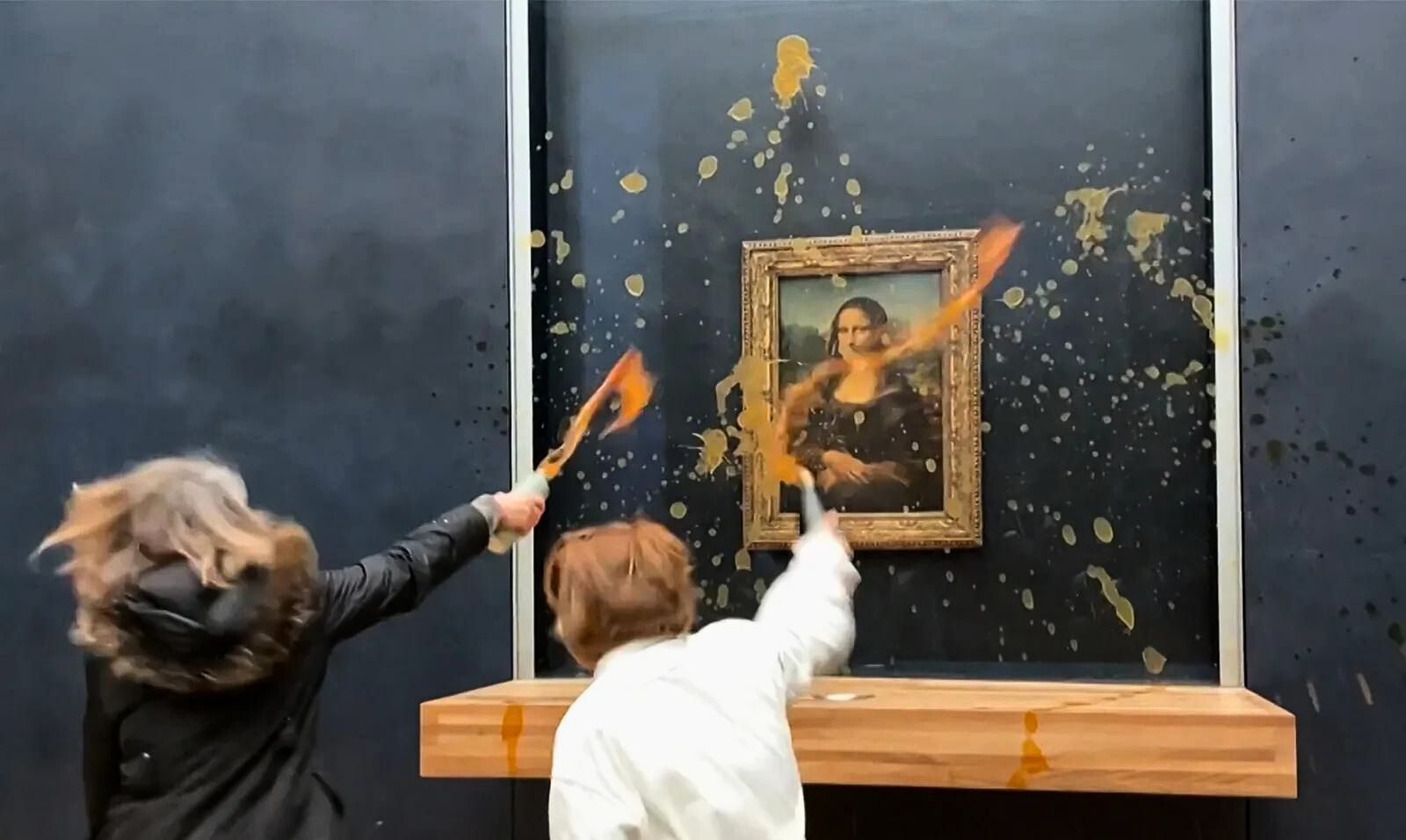Over the years, many forms of activism have emerged to incite change. From hunger strikes to boycotts, there are many strategies that activists have used throughout history. Recently, a new tactic has emerged: the destruction of masterpieces.
Housed in the Louvre for over two centuries, Leonardo da Vinci’s Mona Lisa is arguably the most recognizable piece of art in history. On January 28 of this year, two activists from the group Riposte Alimentaire (“Food Response”) threw soup at the famous work, much to the public’s shock. The activist group believes the current food system “does not respect [the] fundamental right to food” and advocates for a food card worth about $160 to be given to citizens monthly for food-related expenses. “What is more important?” the duo asked the crowd that had gathered to watch. “Art or the right to healthy and sustainable food?” Shortly after the soup hit the bulletproof glass protecting the painting, the room was evacuated. The Mona Lisa was not damaged.
This isn’t the first time something like this has happened. In 2022, a man disguised as an elderly woman threw a cake at the artwork and encouraged the onlookers to “think of the earth” before being detained and eventually sent to a psychiatric unit. Earlier still, a wheelchair user frustrated with the Louvre’s lack of accessibility attempted to spray-paint the Mona Lisa. The painting was also attacked on two separate occasions in 1956—first with acid, and later with a rock. The perpetrator of the second attempt was a homeless man who allegedly committed the act to go to jail and have a warm place to sleep.
Incidents like these beg the question: is vandalizing artwork ever justified? Although it is a form of activism that brings attention to important issues, many believe that causing damage like this is never justifiable. Regardless, these actions can cause irreparable damage to cultural gems. As we continue to navigate the complexities of activism and art, it is important to find ways to bring about change peacefully and without harm.

